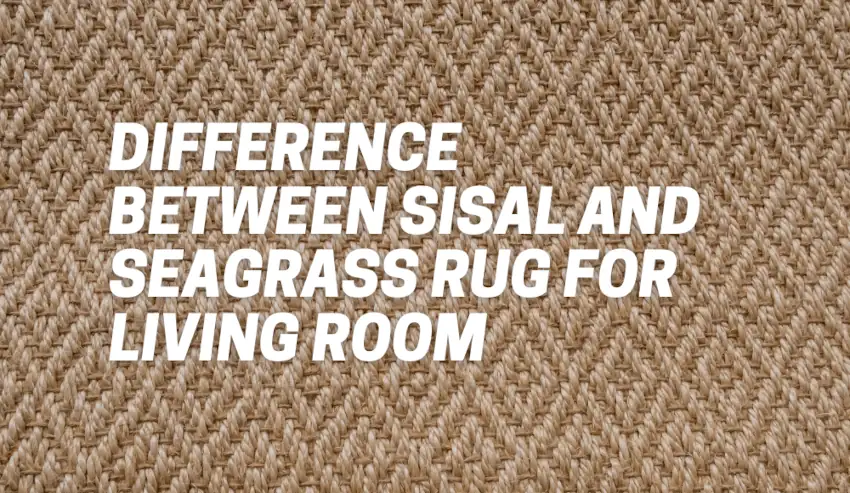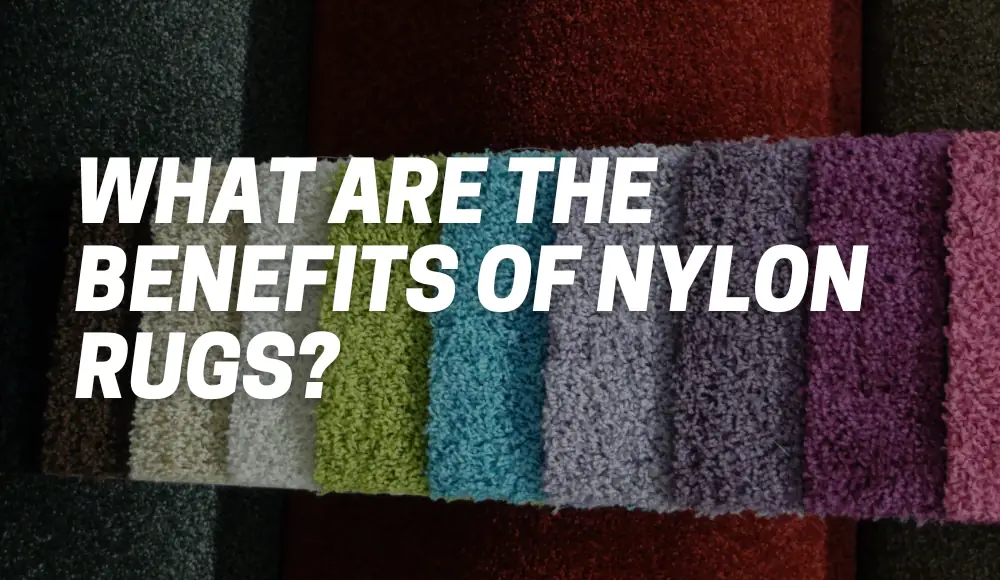Last updated on May 26th, 2024 at 06:27 am
Rug dye bleeding is a common issue that can drastically alter the appearance of your treasured area rugs. Imagine the dismay of witnessing vibrant colors bleed into each other, causing an unintended, unwanted, tie-dye effect on your beautiful rug. However, fear not! This guide will equip you with the knowledge to address, rectify, and even prevent color bleed on rugs. Let’s dive into the world of rug dye bleeding and explore the solutions to restore your rug’s original beauty.
Understanding Rug Dye Bleeding
What is Bleeding in a Rug?
Rug dye bleeding, also known as color bleeding, occurs when the dyes used in the rug fibers start to dissolve and spread, causing colors to run into each other. This can result in a blurred, mixed appearance, marring the rug’s original design.
What Causes Color Bleeding on a Rug?
Numerous factors contribute to color bleeding, including poor dye quality, excessive moisture, high alkalinity in cleaning solutions, or exposure to sunlight. Additionally, different dyes and materials used in the rug can react adversely, leading to bleeding.

Identifying Color Bleeding on a Rug
Identifying color bleeding involves a few simple tests. Dampening a white cloth or cotton swab with water and lightly pressing it against different areas of the rug helps determine if the colors transfer. Similarly, inspecting the fringes or underside of the rug can reveal color bleed.
Addressing Color Bleeding on Rugs
Methods for Treating Color Bleed on a Rug
Addressing color bleed involves various methods, from simple home remedies to seeking professional services or products. Some effective techniques include vinegar solutions, color stabilizers, and specialized rug cleaning services.
- Blotting and Absorption:
- If the color bleeding is fresh, start by blotting the affected area with a clean, white cloth or paper towel. Press down gently to absorb as much of the excess dye as possible.
- Vinegar Solution:
- Mix a solution of one part white vinegar to two parts cold water.
- Test a small, inconspicuous area of the rug first to ensure the colors won’t run further.
- Dab the affected area with the vinegar solution using a clean cloth. Vinegar can sometimes help to set the dye and prevent further bleeding.
- Hydrogen Peroxide:
- For light-colored rugs, you can try using a small amount of hydrogen peroxide on a cotton swab or cloth. Test in an inconspicuous area first to ensure it doesn’t cause damage or discoloration.
- Rug Shampoo:
- Use a rug shampoo specifically designed for the type of rug you have (wool, synthetic, etc.). Follow the manufacturer’s instructions for application.
- Professional Cleaning:
- Consider seeking professional help if the color bleeding persists or if the rug is valuable. Professional rug cleaners have specialized treatments and equipment to address these issues effectively.
- Prevention:
- To prevent color bleeding in the future, always follow the manufacturer’s cleaning instructions. When washing the rug, use cold water and a mild detergent, and avoid mixing different types of rugs in the same wash.
- Rug Padding:
- Consider using a rug pad underneath the rug. This not only provides cushioning but can also help prevent color transfer and bleeding by creating a barrier between the rug and the floor.
If the rug is an antique or holds sentimental value, or if the color bleeding is extensive, it might be best to consult a professional rug cleaner to handle the issue properly and prevent any further damage.
—
How To Fix Color Bleed on Rug Reddit Advice
Here’s a summary of advice from Reddit threads on fixing color bleed on rugs:
| Key Points |
|---|
| – Washed rug in 40°C water with detergent, caused color bleed in some spots. |
| – Concerned about using bleach due to the rug’s natural wool fibers. |
| – Suggested rinsing the rug again to dislodge loose dye, as it might not have permanently stained the fibers. |
| – Professional rug cleaning involves using a lot of water, and pH adjustments to reduce dye running. |
| – Considering washing the rug again, despite its large size. |
| – Inquires about spot treatment for affected areas before re-washing. |
| – Recommends trying isopropyl alcohol for spot treatment before re-washing due to the rug’s large size. |
| – Notes alcohol’s effectiveness in removing dye stains. |
| – Suggests adding vinegar to the wash to set the dye. |
| – Recommends adding soda ash in the wash, similar to what’s used for tie-dyeing. |
| – Proposes adding a tablespoon of salt to the wash. |
| – Recommends testing scotch guard treatment in an inconspicuous area before treating the entire rug. |
| – Advises against water exposure on viscose rugs, particularly in high-traffic areas due to wear concerns. |
| – Decides against a rug for high-traffic, water-prone areas based on Charming_Tower_188’s advice. |
| – Suggestions include power washing, wearing socks, and adding salt to the wash. |
| – Mixed opinions on using vinegar and other substances for dye setting or removal. |
Fixing Color Bleed on a Rug at Home
Home remedies can sometimes mitigate color bleeding. Cold water, white vinegar, and mild detergent solutions are often used for spot treatments. However, caution is essential as DIY methods might not be suitable for all rugs.
Professional Services and Products
Professional rug cleaning services employ techniques like color restoration, pH balancing, and specialized treatments that can effectively rectify color bleed issues. Consulting these experts can often restore a rug to its former glory.
Prevention and Future Care
Preventing Color Bleeding in Rugs
Avoiding color bleeding involves understanding the rug’s material and taking proper care. Regular vacuuming, blotting spills immediately, and using color-safe cleaning agents are preventive measures.
- Read Care Instructions: Always follow the manufacturer’s care instructions for cleaning and maintaining the rug. Different materials require specific cleaning methods to avoid color bleeding.
- Spot Test: Before attempting any cleaning, always perform a spot test in an inconspicuous area of the rug to ensure that the cleaning solution won’t cause color bleeding or damage.
- Use Cold Water: When cleaning your rug, especially if it’s handmade or has natural dyes, use cold water. Hot water can cause dyes to bleed.
- Separate Colors: When washing or cleaning the rug, keep different colors separate. If there are specific areas or fringes with unstable dyes, avoid letting them come in contact with other colors or water.
- Avoid Harsh Chemicals: Stay away from harsh chemicals, strong detergents, or bleach that can strip the dyes or cause bleeding.
- Professional Cleaning: Consider professional cleaning for valuable or delicate rugs. Professionals have the expertise and appropriate cleaning solutions to prevent color bleeding while thoroughly cleaning the rug.
- Rug Pads: Use a rug pad underneath the rug. Not only does this add cushioning and prevent slipping, but it can also act as a barrier between the rug and the floor, reducing the risk of color transfer.
- Prompt Stain Removal: Address spills or stains immediately. Blot the affected area with a clean, white cloth or paper towel to absorb the spill. Avoid rubbing, as it might spread the stain or cause color bleeding.
- Rotate the Rug: Regularly rotate your rug to ensure even wear. This can prevent specific areas from receiving more foot traffic or sunlight, reducing the risk of color fading or uneven wear.
- Avoid Sunlight: Prolonged exposure to direct sunlight can cause fading and discoloration. Consider rotating the rug periodically to ensure even exposure to sunlight.
Impact of Rug Material on Color Bleeding
Different rug materials demand different treatments. Wool, cotton, and synthetic fibers have varying degrees of colorfastness, affecting how they respond to cleaning methods and preventing color bleed.
- Wool Rugs: Wool is a popular material for rugs and generally holds color well. However, some natural dyes used in wool rugs may be less stable and more prone to bleeding when exposed to moisture or certain cleaning solutions. Always test a small area before applying any cleaning method to a wool rug.
- Synthetic Rugs: Synthetic rugs, like those made from nylon, polyester, or polypropylene, are less likely to experience color bleeding compared to natural fibers. They are more resistant to moisture and cleaning solutions. However, this isn’t a universal rule, as cheaper or lower-quality synthetic rugs might still experience bleeding.
- Silk Rugs: Silk is a delicate and luxurious material used in some high-end rugs. While silk holds dyes beautifully, it is extremely sensitive to moisture and certain cleaning agents. It’s crucial to take extra care when dealing with silk rugs to avoid color bleeding.
- Cotton Rugs: Cotton rugs, especially those made with natural dyes, can be prone to color bleeding when exposed to water or cleaning solutions. Care must be taken during cleaning to prevent bleeding in these types of rugs.
- Natural Fiber Rugs (Sisal, Jute, etc.): Rugs made from natural plant fibers may also be susceptible to color bleeding, especially when exposed to moisture. These materials can absorb water and cleaning solutions, leading to potential color transfer or bleeding.
In general, the risk of color bleeding can vary within each type of material based on the quality of dyes used and the rug’s construction. Understanding the specific characteristics of the rug material and the type of dyes used can help in determining the best cleaning and maintenance practices to prevent color bleeding. Always test cleaning solutions in an inconspicuous area and consider professional assistance for valuable or delicate rugs.
Restoring and Testing Rugs for Color Bleeding
Restoring Original Colors of Affected Rugs
Restoration methods vary depending on the severity of the bleed. Professional color restoration techniques involve meticulous color matching and correction to revive the rug’s original hues.
- Professional Rug Cleaning:
- Consult a professional rug cleaner experienced in dealing with color bleeding issues. They have specialized treatments and techniques to address this problem without causing further damage to the rug.
- Color Correction:
- Professional rug restorers might be able to perform color correction processes. They can use techniques such as dyeing or color stabilizing to restore the original colors or mitigate the effects of color bleeding.
- Oxalic Acid Soak:
- Oxalic acid is sometimes used to remove or lighten dyes. However, this method is aggressive and can damage the rug if not used properly. It’s best left to professionals.
- Spot Treatments:
- In some cases, spot treatments with mild cleaning solutions might help fade or remove excess dye. Always test these treatments in an inconspicuous area first to ensure they won’t worsen the problem.
- Color Reviving Solutions:
- There are commercial color reviving solutions available specifically for rugs. These products are designed to restore color vibrancy, but they might not completely eliminate color bleeding.
- Sunlight and Air:
- Sometimes, airing out the rug in natural sunlight can help to fade excess dye. However, be cautious with this method, as excessive exposure to sunlight can lead to fading or discoloration of the original colors.
- Prevention and Professional Help:
- To prevent further color bleeding and potential damage, consider seeking professional assistance. They can assess the damage and apply appropriate methods for restoration.
The type of rug material, the dyes used, and the severity of the color bleeding will impact the success of these methods. In cases where the rug is valuable or holds sentimental value, seeking professional help is often the best course of action to avoid causing further damage during the restoration process.
Testing for Colorfastness
Testing a rug for colorfastness is vital to prevent future bleeding. Conducting a colorfastness test before cleaning or using any product ensures the dyes won’t bleed or fade.
Expert Data: Rug Material Comparison Table
| Rug Material | Color Bleeding Treatment | Durability | Recommended Cleaning |
|---|---|---|---|
| Wool | Professional treatments | High | Dry cleaning, gentle wash |
| Cotton | Spot treatments | Moderate | Hand wash, low moisture |
| Synthetic | Color stabilizers | High | Vacuum, mild detergents |
Conclusion
In conclusion, tackling color bleeding in rugs involves a nuanced understanding of the rug’s material, causes, and appropriate treatment methods. Whether opting for DIY remedies or seeking professional services, addressing color bleed promptly is crucial to restore the rug’s original charm. Additionally, preventive care significantly reduces the risk of color bleeding, ensuring your rugs retain their vibrancy for years to come.
Remember, while some methods can effectively address color bleeding, always approach the treatment of your rugs with care and consideration for the rug’s material and condition. Your rugs deserve the best care to retain their beauty and value.


